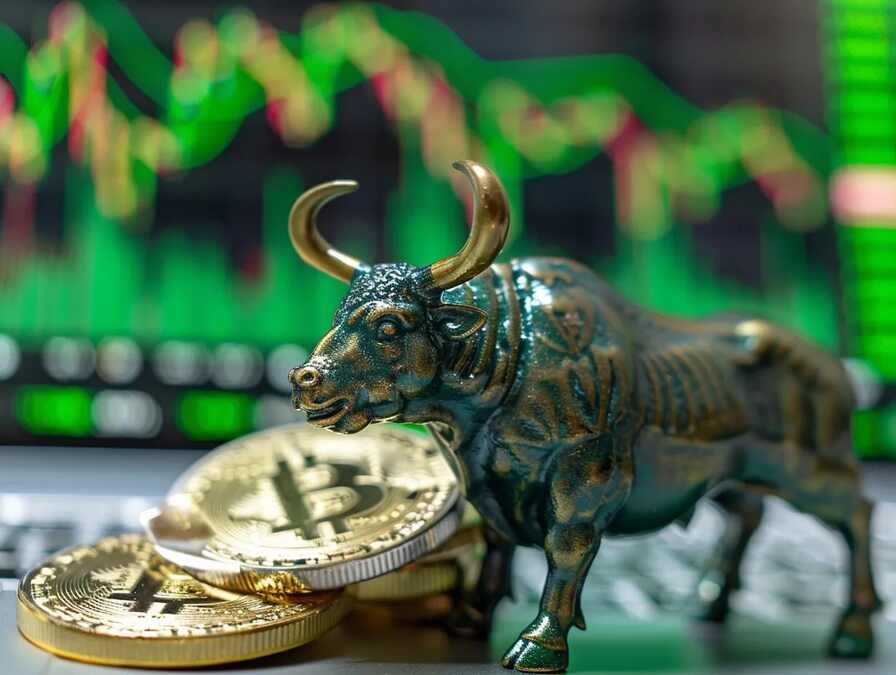Bitcoin Price Today: The Best Powerful Comprehensive Analysis of Market

Bitcoin Price Today Bitcoin (BTC), the world’s first and most valuable cryptocurrency, continues to dominate headlines as it influences global financial markets. Its price is constantly fluctuating, driven by a complex web of factors that include supply and demand dynamics, macroeconomic conditions, and investor sentiment. The adoption of blockchain technology by major corporations and governments. As we assess Bitcoin’s price today, it’s crucial to look beyond the raw numbers and explore the reasons behind its current position in the market, how it compares to historical prices, and what lies ahead in the near and distant future.
This article aims to give a deep, data-backed analysis of Bitcoin’s current price, trends influencing its value, and expert forecasts for the coming years.
Current Bitcoin Price: An Overview
As of today, Bitcoin’s price hovers around $XXX,XXX USD, marking a notable point in its ongoing volatility. Whether you’re a long-term holder, an active trader, or simply an observer of the market, understanding the forces behind Bitcoin’s price can help you make more informed decisions.
At this point, it is important to understand that the price of Bitcoin can change rapidly within minutes due to its high level of volatility. For this reason, platforms such as CoinMarketCap, CoinGecko, or Binance provide real-time price updates.
Historical Context
To truly understand where Bitcoin stands today, it’s helpful to look back at its price history. Since its creation in 2009 by an anonymous entity known as Satoshi Nakamoto, Bitcoin has experienced extreme volatility:

- 2010-2011: Bitcoin’s price was practically negligible, trading for pennies before hitting $1 USD for the first time.
- 2013: The price surged past $1,000 USD, drawing attention from media outlets and traditional financial institutions.
- 2017: Bitcoin saw its first major bull run, skyrocketing to nearly $20,000 USD.
- 2021: Following several years of steady growth, Bitcoin reached its all-time high of around $64,000 USD in April, before experiencing corrections that fluctuated between $30,000 and $60,000 USD throughout the year.
- 2022-2023: The onset of a crypto winter saw Bitcoin dip below $20,000 USD, but the cryptocurrency gradually started recovering towards the end of 2023, indicating a resurgence in investor confidence.
Today, Bitcoin trades at a price that is shaped by multiple factors including the aftermath of the COVID-19 pandemic, geopolitical instability, and the evolving regulatory landscape.
Factors Influencing Bitcoin’s Price Today
Bitcoin’s price doesn’t exist in a vacuum. It’s a product of the dynamic interaction between a variety of factors, both external and internal to the cryptocurrency ecosystem. Below are some of the most significant drivers of Bitcoin’s price today.
1. Supply and Demand
Bitcoin operates on a fixed supply model, with only 21 million BTC ever set to exist. As of today, over 19 million BTC have already been mined. This limited supply, coupled with rising demand, drives Bitcoin’s price upwards, especially when investor sentiment is bullish.
On the other hand, periods of lower demand or market sell-offs can create bearish trends. Since Bitcoin’s halving events—which occur approximately every four years—reduce the number of new coins entering the market, they can create supply shocks that significantly affect price.
2. Institutional Adoption
Bitcoin has increasingly gained legitimacy as an investment vehicle, with institutional investors like Tesla, MicroStrategy, and Square adding Bitcoin to their balance sheets. Moreover, Bitcoin ETFs (Exchange-Traded Funds), such as those launched in Canada and other regions, allow traditional investors to gain exposure to Bitcoin without directly owning the cryptocurrency.
When major institutions buy large amounts of Bitcoin, it signals confidence in the asset, often causing prices to spike. The same is true for positive comments or policy changes from notable figures in finance and technology.
3. Government Regulation
Government policies and regulations play a pivotal role in shaping the price of Bitcoin. As countries adopt varying stances towards cryptocurrencies, Bitcoin’s price reacts accordingly. In countries where regulation is favorable—such as El Salvador, which made Bitcoin legal tender in 2021—the price tends to experience bullish behavior.
On the flip side, regulatory crackdowns in countries like China and India have historically led to sharp price declines. As investors react to uncertainties surrounding Bitcoin’s future legal status in these regions. Additionally. The stance of major financial regulators like the SEC (Securities and Exchange Commission) in the U.S. Regarding Bitcoin ETFs and crypto assets more broadly has a profound impact on market sentiment.
4. Market Sentiment and News
Bitcoin’s price is often driven by investor sentiment, which is influenced by global news cycles. Major announcements—such as a corporation accepting Bitcoin as payment or a country launching its own central bank digital currency (CBDC)—can cause large price movements. Conversely, news about hacks, scams, or exchanges going bankrupt can drive the price down due to fear and uncertainty.
In addition, social media platforms like Twitter, Reddit, and Telegram often play a role in amplifying market movements. Public statements by influential figures, such as Elon Musk, have previously triggered large price swings, often within minutes of a tweet or interview.
5. Technological Developments
Bitcoin’s underlying technology, blockchain, is constantly evolving. While Bitcoin itself is more conservative compared to other blockchains like Ethereum or Solana, improvements to its infrastructure, such as the adoption of the Lightning Network for faster and cheaper transactions, can influence its price.
Similarly, Bitcoin forks—such as Bitcoin Cash and Bitcoin SV—can affect Bitcoin’s price by dividing investor attention and market share.

6. Macroeconomic Factors
Global economic conditions also have a direct impact on Bitcoin’s price. During periods of economic instability, investors often look for “safe-haven” assets to protect their wealth. While gold has traditionally filled this role, Bitcoin has emerged as an alternative in recent years. For instance, the economic fallout from the COVID-19 pandemic led to increased interest. Bitcoin’s rise comes as central banks engage in aggressive monetary easing, fueling concerns about fiat currency devaluation.
Additionally, geopolitical tensions, inflation concerns, and changes in interest rates can create conditions where Bitcoin’s price reacts similarly to traditional safe-haven assets.
Bitcoin Price Predictions for 2024 and Beyond
Bitcoin’s price trajectory is notoriously difficult to predict due to its high volatility and the multitude of factors that influence it. However, numerous market analysts and crypto experts have offered forecasts for the coming years based on historical trends. Macroeconomic conditions, and the cryptocurrency’s increasing integration into the global financial system.
1. The Impact of Bitcoin Halving in 2024
One of the most significant events set to impact Bitcoin’s price in the near future is the Bitcoin halving scheduled for 2024. Every four years, the reward for mining Bitcoin is halved, reducing the amount of new BTC entering circulation. This event has historically resulted in a bull market, as decreased supply, combined with sustained demand, creates upward pressure on the price.
Past helving’s—occurring in 2012, 2016, and 2020—each triggered prolonged bullish periods for Bitcoin. With prices reaching all-time highs within 12 to 18 months post-halving. Experts expect. The 2024 halving could lead to another surge, with some analysts predicting that Bitcoin could potentially surpass $100,000 USD by the end of 2024 or early 2025.
2. Institutional Investment and Regulatory Clarity
As institutional interest in Bitcoin grows, so too will its potential for further price appreciation. Companies like BlackRock and Fidelity have hinted at increased crypto offerings, and while more. Bitcoin ETFs are being proposed for approval in the U.S. As regulatory clarity improves, particularly in key markets like the U.S. and Europe, more institutional players may enter the space, creating additional upward pressure on Bitcoin’s price.
Conversely, negative regulatory developments—such as more stringent capital controls or outright bans—could stifle growth and lead to a bearish outlook for Bitcoin.
3. Growing Adoption as a Payment Method
Major brands such as PayPal, Microsoft, and Starbucks now allow customers to make purchases using Bitcoin. Increasing its utility as a medium of exchange. If this trend continues, it could further legitimize Bitcoin as a functional currency. Driving broader adoption and possibly boosting its price in the long term.
Additionally, the development of Layer 2 solutions like the Lightning Network makes Bitcoin transactions faster and cheaper. Which could help facilitate its use in everyday transactions and contribute to price appreciation.
Bitcoin as a Long-Term Store of Value
While Bitcoin’s price fluctuations may make it seem unstable in the short term, many investors view it. As a long-term store of value, akin to digital gold. With a finite supply and a decentralized nature, Bitcoin is seen by some as a hedge against inflation and currency devaluation.
Read more: Lowest Fee Crypto Exchange





